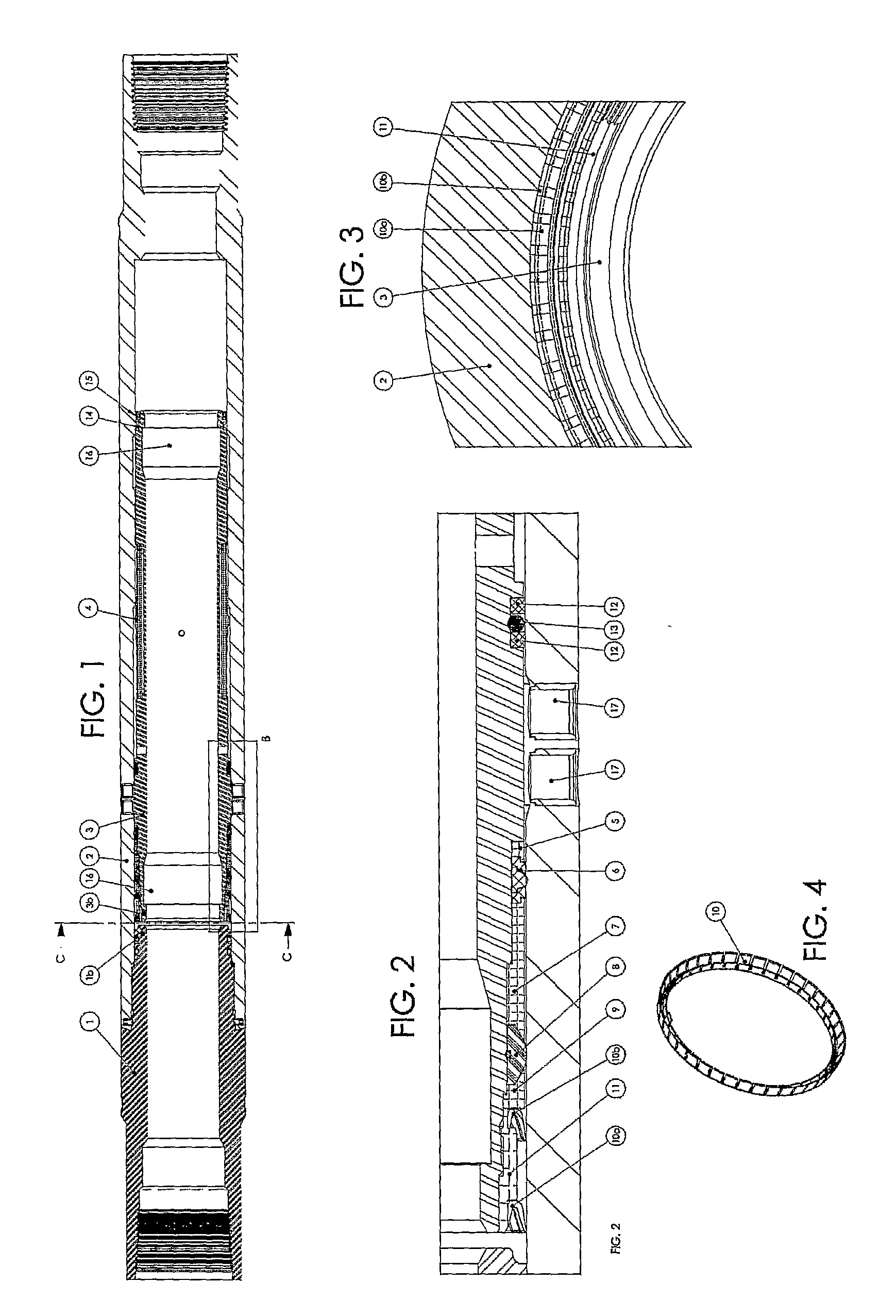Valve for Wellbore Applications
a valve and wellbore technology, applied in the direction of wellbore/well accessories, engine components, mechanical equipment, etc., can solve the problems of large differential pressure, high risk of damage on the formation, and high pressure on geothermal applications, so as to reduce the requirements for each seal, reduce the cost of adding hard insets in the ports, and simplify the design
- Summary
- Abstract
- Description
- Claims
- Application Information
AI Technical Summary
Benefits of technology
Problems solved by technology
Method used
Image
Examples
Embodiment Construction
[0032]FIG. 1 is a longitudinal cross sectional view of a valve according to the invention. In FIG. 1, the valve is shown in a closed state. An end part 1 connected to a valve housing 2 form the outer shell of the valve. The valve housing 2 comprises radial side ports 17. An inner sliding sleeve 3 can be moved axially inside the valve housing 2 in order to open or close the radial side ports. As can be best seen in FIG. 2, the sliding sleeve 3 has no ports. Rather, the edge of the sleeve 3 is moved past the housing ports 17 to reach the open position. The inner sliding sleeve 3 is prevented from rotating in the valve housing 2 because it may become necessary to rotate an activating tool (not shown) if it should become stuck.
[0033]In FIG. 1, a flexible latch ring 4 connected to the sliding sleeve 3 abuts an inner shoulder along a circumference of the valve housing 2. In order to open the valve, the sliding sleeve 3 must be pulled towards the ring 4 (to the right in FIG. 1) with suffic...
PUM
 Login to View More
Login to View More Abstract
Description
Claims
Application Information
 Login to View More
Login to View More - R&D
- Intellectual Property
- Life Sciences
- Materials
- Tech Scout
- Unparalleled Data Quality
- Higher Quality Content
- 60% Fewer Hallucinations
Browse by: Latest US Patents, China's latest patents, Technical Efficacy Thesaurus, Application Domain, Technology Topic, Popular Technical Reports.
© 2025 PatSnap. All rights reserved.Legal|Privacy policy|Modern Slavery Act Transparency Statement|Sitemap|About US| Contact US: help@patsnap.com


